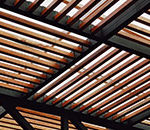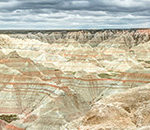
Most individuals who have ventured into the world of digital photography in recent years, have a somewhat working knowledge of computers. They usually know how to get their latest photos from the storage card to their computer’s hard drive, and printed out on their desktop printer. Beyond that, well who cares as long as the photo prints look OK.
Many of these individuals have even gone so far as to delve into the subject a little deeper, and have read or heard about the resolution needed for good quality prints, a bit about file types, and even touched base with a version of Adobe Photoshop to process and enhance their works of art. This is all fine and dandy, but the problem that arises is that most of the knowledge they seem to collect in their search, is either outdated or dished out by those who sound like they know more than they actually do.
While it is true that you need a certain level of image file resolution to produce a fine quality photo print, how that level of resolution is achieved is another matter. Digital photo printing should be done with an image file that is at 200 to 300 dpi minimum, (actual term would be ppi for an input file, or pixels per inch). As important as the digital photo’s resolution is to achieve this resolution and print output size without resampling the original digital photo file to produce this resolution and print size. The absolute finest quality photo prints will be produced with the unresampled, original photo file.
To produce the larger print sizes now available on the affordable medium format digital photo printers, requires photo enlargement techniques. Most people simply open the original photo file in their version of Photoshop, and resize the file by entering the width and height dimensions, resolution dpi they want, leave the resample option checked and click the OK thinking all is just great. This will resample the photo file and degrade the original image quality. Photoshop uses a simple bicubic resampling method to resize the file. This method actually recreates and artificially produces new pixels for a higher image resolution and larger print size. This is the action that degrades the original image.
The Photoshop resampling will have to work if that’s all you’ve got. If your photo enlargement is not too big, the degrading of the image may not be too noticeable. If you require photo enlargements much larger, or prints in the range of 16×20 and larger, simple file resampling will not produce quality results. That is why you hear all over the Web that very large print sizes are just not possible, even from the newer high resolution digital cameras. NOT SO! I print and ship photo enlargements as large as 40×60 from 6 megapixel cameras and guarantee customer’s satisfaction. Have never had one returned!
To achieve high quality photo enlargement of digital photos requires a slight shift in processing thinking and a certain file handling methodology. You will also need to purchase additional digital processing software, besides your image editing application such as Photoshop. One application is a Photoshop plug-in utilizing fractal technology for image resolution boosting called Genuine Fractals. The second application, and most important, is a very high quality RIP software, or “Raster Image Processing” program that will reprocess input files before printing. RIP software is available, and highly recommended, for use with all medium format and large format digital printers where photo enlargement is the rule of thumb. Most quality RIP software applications today also include complete color management features, along with many other amazing editing and enhancement features.
Instead of preparing your digital photo for printing using Photoshop, you will only use this program to set up the file for photo enlargement and perform some sizing and cropping functions, and any image enhancements. Any required photo enlargement and image resolution building will be performed with Genuine Fractals. Digital processing to a proper output resolution will be done with the RIP software, which does a much, much better job of resampling the photo file than Photoshop. There are some enhancing functions that should not be performed on the image file until after the photo enlargement is at target print size. Read more photo enlargement tips here.
The best way to describe this advanced photo enlargement methodology is to walk through an example photo enlargement using a standard high resolution digital camera with a set large format target print size. For this example I will use a Canon 6.3 megapixel digital camera format with a 3072×2048 pixel dimension and a target print size of 30×40. This target print size will require photo enlargement and photo cropping.
Please note that the RIP software I will be using in this example will reprocess the final set up file to a resolution of 360 dpi before sending to the printer. It is best to use a set up dpi that is an even variable of the final reprocessed dpi. The lowest set up resolution I use for large format photo enlargement is 90 dpi. The key to the finest quality photo enlargements is to never resample the file in Photoshop.
Using Photoshop CS and photo in landscape orientation:
Start by opening the original photo file in Photoshop CS then:
Click image > image size
uncheck resample and enter “90” in the resolution field.
Produces an image: width 34.133 in. x height 22.756 in. at 90 ppi.- OK
Save in Genuine Fractals file format – encoding lossless.
Open the same file in the Genuine Fractals format.
You will note the same image specifics from the Photoshop sizing.
For the width and height fields select “inches” and enter: height- 30 and width- will automatically be 45. For width and height fields re-select “percentage” and you will see a photo enlargement of 131.836 % is required for this print size at 90 ppi. – Click OK
Please note that Genuine Fractals states photo enlargements up to 400% are possible, but experience has taught me that to maintain original image quality, it is usually best to keep this photo enlargement percentage within a maximum of about 225%. The quality of the photo enlargement depends on the pixel density of the original file.
Resave this processed file in a Photoshop format (.psd) or .tif format.
Re-open .psd file in Photoshop CS. To crop for the 30×40 print size without resampling this file: Select crop tool > enter in the crop tool parameters:
Width – 40 in height – 30 in, and resolution 90.
Drag the crop tool over the entire image and click view > snap to > document bounds, to keep the crop lines within the edges of the image. Click crop check mark to set crop.
You now have an image that is 40″w x 30″h at 90 ppi. Now is time you would want to apply any image enhancements to the photo enlargement, and the very last function would be to sharpen the image using the unsharp mask filter.
Send the photo enlargement to the printer through the RIP software and the image will be re-processed to 360 ppi, and print with amazing original image quality. We provide a chart of photo enlargement capabilities by digital photo megapixel resolution for an easy reference. All the photo enlargement sizes are figured utilizing the processing methodology described in this article.
Wide format photo enlargements yielding original image quality are absolutely possible if the original file is processed correctly and you avoid resampling the image pixels in your image editing software. Of course, high quality results require the use of these advanced software applications and this will also require reaching a bit deeper in your pockets.
About the Author
Mike Kruske established PhotoArt Imaging Digital Arts Center in 1997 specializing in Photo Enlargement, Digital Photo Enlargement and Wide Format Digital Photo Printing of Digital Images. This targeted experience provides a unique insight into digital photo processing for large format print output. More info here: PhotoArt Photo Enlargement and Digital Photo Printing
Like This Article?
Don't Miss The Next One!
Join over 100,000 photographers of all experience levels who receive our free photography tips and articles to stay current:






Nice way!
But ive enlarged and, as well printed it with prog made by ronyasoft;)
My regards
A 6.3 Mp Canon branded as a “high res digital camera” ?… When was this article written ??….. The technology outlined here sounds pretty obsolete for a 2015 reader.
Thanks for the tips.
I’m no photography buff, but I will take your advice and see what kind of results I get.
A cell phone picture to an 11X17 print is going to be a challenge!
Cheers
Graham